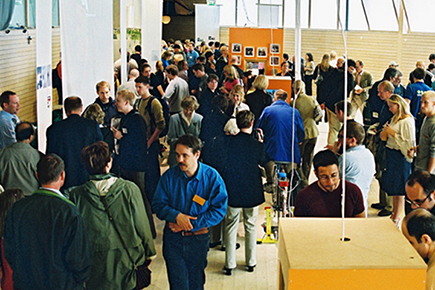Ubiquitous Computing project course, Chalmers University

The goal of this project course within the then new Human-Computer Interaction program was to explore the area of 'ubiquitous computing' and for students to develop and design a physically-situated interface. This was a 7-week foundational course supporting individual development of technical skills, knowledge of the domain area, and implementation of design concepts. Hardware prototyping and software programming skills were the focus of skill-based workshops and tutorials led by Peter Ljungstrand. Resolving these in relation to conceptual development and design qualities were my focus. These issues were developed through lectures, workshops and tutorials focused on experience prototyping and qualities of interaction. Project work was done within groups, in which students were also expected and supported to develop communication and project management skills. Students were required to contextualize their projects in relation to related work in affective computing, reactive environments, augmented reality, wearable computing, tangible media and calm technology. In one iteration of the course, I led, with Lalya Gaye, a two-day workshop on tangible music interfaces.
Level Masters (MSc) compulsory course for HCI program
Credits 5
Dates 2002 and 2003
Number of students 35-45
My role
Two iterations of the course (2002 and 2003) were co-taught by Peter Ljungstrand and myself. Peter Ljungstrand took responsibility for the course struture, administration and technical supervision. We took joint responsibility for the overall content, tutorials and assessment.
Student projects from the UbiComp course taught in spring 2002 were among those selected to be exhibited in an invited exhibition at Universeum (Sweden's National Science Discovery Center) on May 15-22. I was project manager and curator for the exhibition, which included work from all courses within the HCI/Interaction Design program. Several of the student projects were further developed as master's theses. Several student papers were accepted for presentation at the CHI and NordiCHI conferences. One group project 'Spyballs' became 'Spookies' and was developed as a startup company ToyLabs ITR AB (with support from the Interactive Institute studio, of which I was director, and the institute's projects Smart-Its and IT+Textiles).
Image (above)
Opening of an exhibition of student projects from the HCI/Interaction Design program at
Universeum
More about the course
Course webpage, spring 2002
Course webpage, winter 2003
See also
/ Projects / Smart-Its
/ Projects / IT+Textiles
